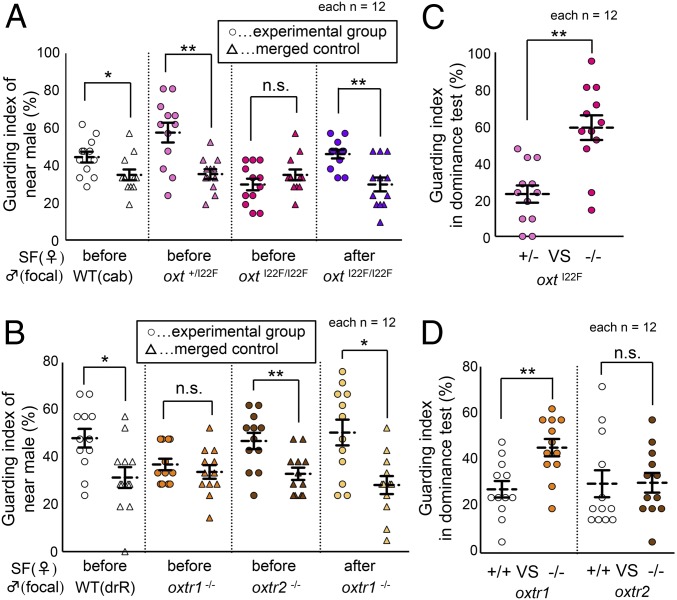Fig. 3.
Effect of social familiarization on mate-guarding behavior. (A) Although oxtI22F/I22F males did not exhibit mate-guarding behavior toward unfamiliar WT females (dark pink), social familiarization (SF) enhanced the mate-guarding behavior of these mutant males toward familiarized mates (purple). (B) oxtr2−/− males exhibited mate-guarding toward unfamiliar females (brown), whereas oxtr1−/− males did not (orange). oxtr1−/− males exhibited mate-guarding toward socially familiarized females (beige). (C) oxtI22F/I22F males (dark pink) tended to be dominant in the dominance test using familiar females. (D) oxtr1−/− males (orange) tended to be dominant in the dominance test using familiar females. (A–D) Mean ± SEM, n = 12 per group, Mann–Whitney U test: *P < 0.05; **P < 0.01; n.s., not significant.  , female;
, female;  , male.
, male.

